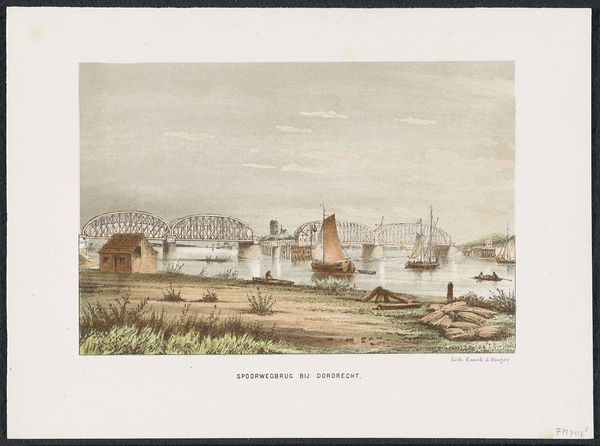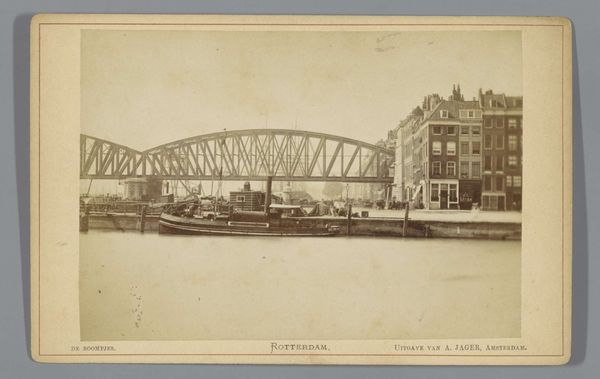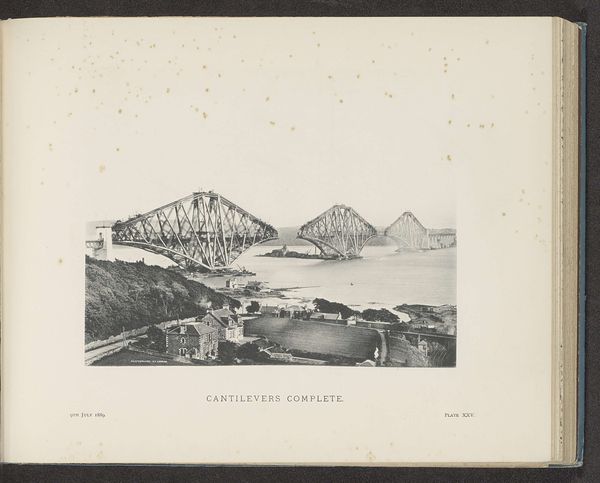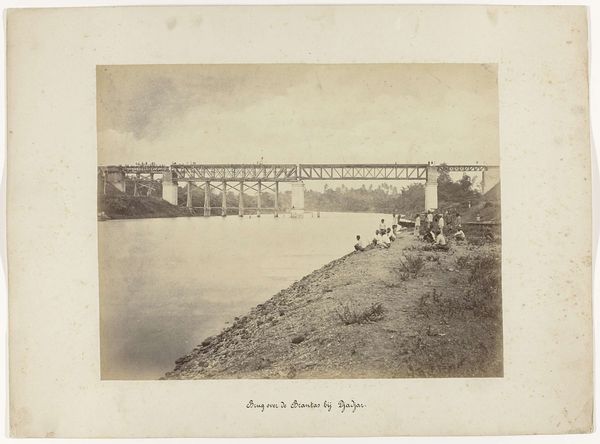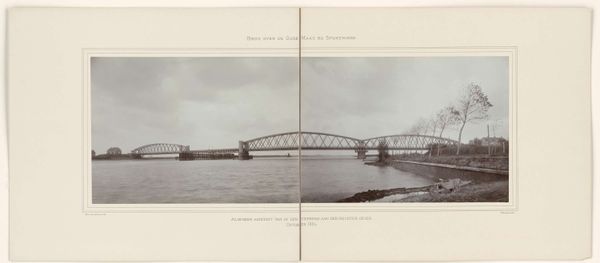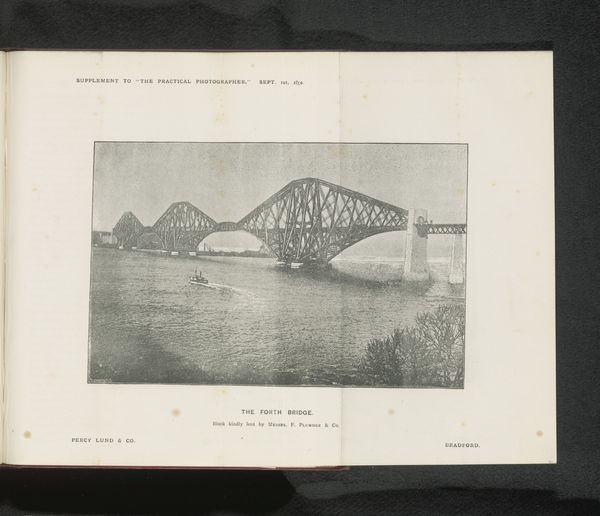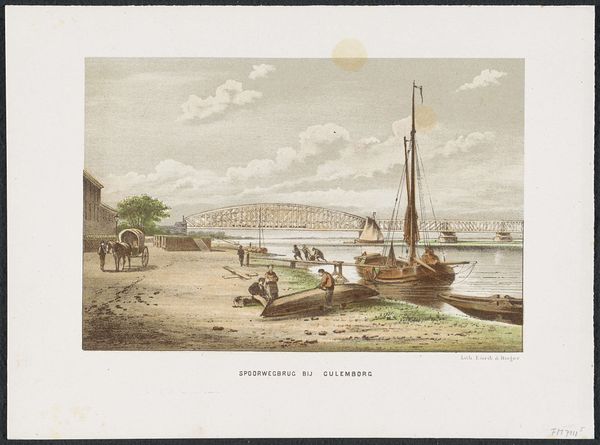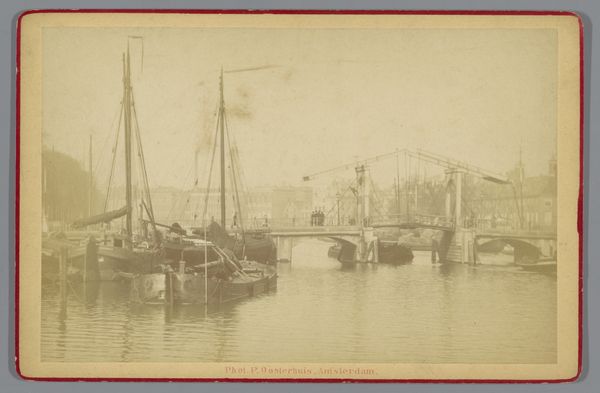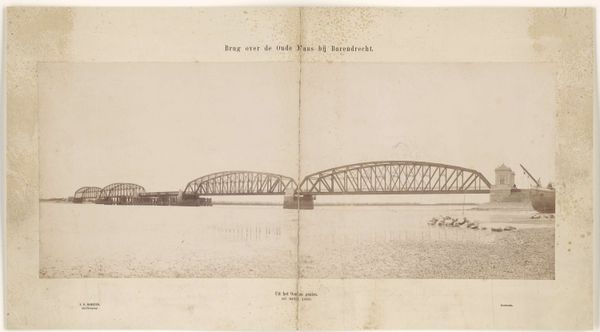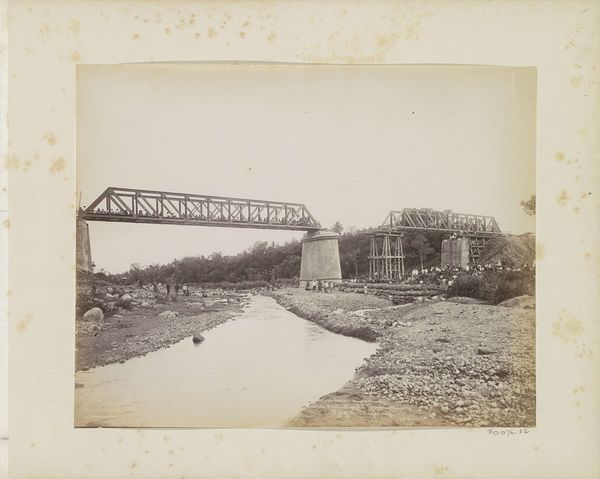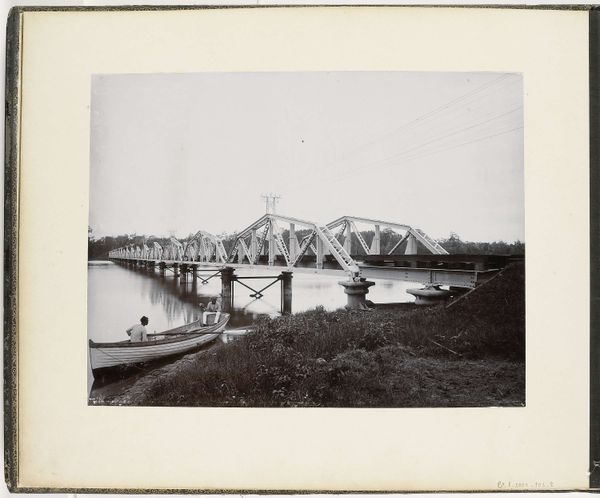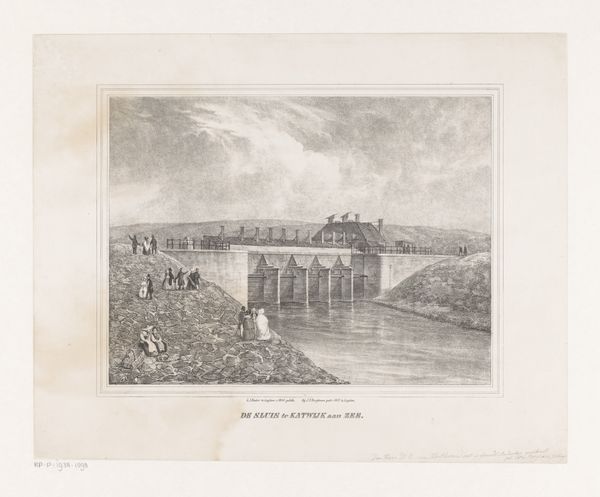
photography, gelatin-silver-print
#
landscape
#
photography
#
gelatin-silver-print
#
cityscape
#
realism
Dimensions: height 107 mm, width 165 mm
Copyright: Rijks Museum: Open Domain
Editor: This gelatin silver print, titled *Gezicht op de Koningshavenbrug in Rotterdam,* which translates to 'View of the Koningshaven Bridge in Rotterdam,' was taken sometime between 1874 and 1890. I find it fascinating how such a seemingly mundane industrial scene feels so monumental. What draws your attention when you look at this photograph? Curator: What strikes me is how this photograph situates itself within the context of Rotterdam's rapid industrialization. This bridge wasn't just a feat of engineering; it was a symbol of progress, connecting different parts of the city and facilitating trade and development. Photography, at this time, became a tool to document and celebrate these achievements, projecting an image of a modern, forward-thinking Rotterdam to the world. Editor: So, you're saying the photograph served almost as a form of propaganda, highlighting the city's advancement? Curator: Precisely. But it's more nuanced than simple propaganda. Consider the composition. The photographer deliberately chooses this angle, emphasizing the bridge's scale and complexity, almost as a celebration of human ingenuity, also documenting the environment being impacted by building the bridge. The presence of materials in the foreground also draws the viewer's eye to the industrial scene being portrayed. Editor: I hadn't thought of it that way. I was mostly focused on the visual appeal. I guess I overlooked the deliberate messaging in its historical context. Curator: That’s understandable. Art isn't created in a vacuum. Recognizing how socio-political forces influence the production and reception of art opens a richer understanding. The photograph's place in a public collection like the Rijksmuseum, further solidifies its importance and status. What do you make of that? Editor: Good point. It becomes more than just a picture, it’s an artifact reflecting how society saw itself then, and how we choose to remember it now. Thanks, I never thought about that aspect! Curator: It’s about uncovering those layers, questioning the narratives they tell.
Comments
No comments
Be the first to comment and join the conversation on the ultimate creative platform.
